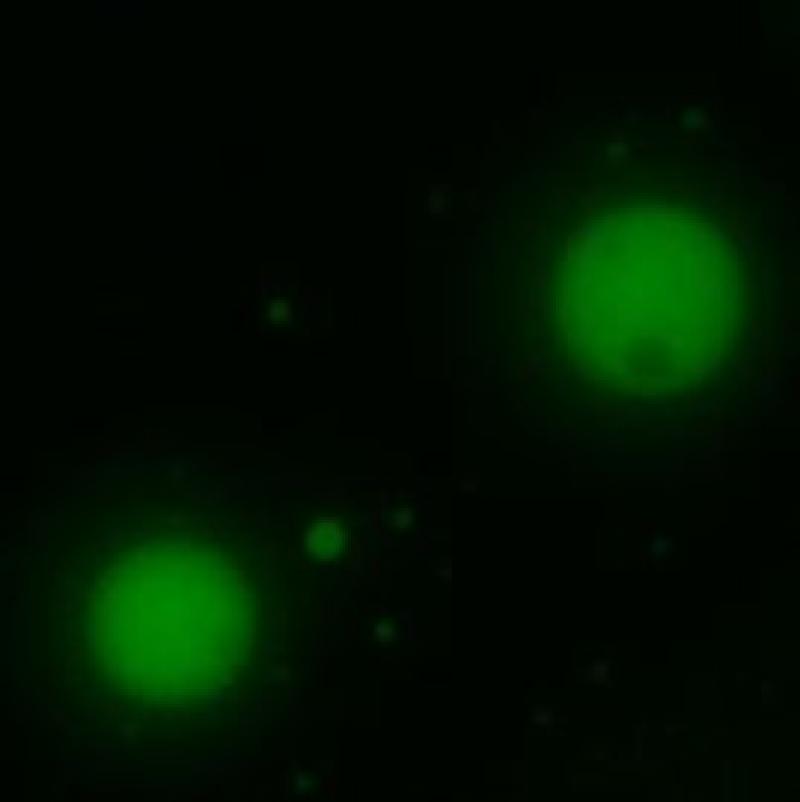Droplets of these simple molecules may have helped kick-start life on Earth




For the origin of life on Earth , ancient puddles or coastlines may have had a major ripple effect.
A new study shows that a simple class of molecules called alpha hydroxy acids forms microdroplets when dried and rewetted , as could have taken place at the edges of water sources. These cell-sized compartments can trap RNA, and can merge and break apart — behavior that could have encouraged inanimate molecules in the primordial soup to give rise to life, researchers report July 22 in the Proceedings of the National Academy of Sciences .
Besides giving clues to how life may have gotten started on the planet, the work might have additional applications in both medicine and the search for extraterrestrial life.
Present-day biology relies on cells to concentrate nutrients and protect genetic information, so many scientists think that compartments could have been important for life to begin. But no one knows whether the first microenclosures on Earth were related to modern cells.
“The early Earth was certainly a messy place chemically,” with nonbiological molecules such as alpha hydroxy acids potentially having roles in the emergence of life alongside biomolecules like RNA and their precursors, says biochemist Tony Jia of Tokyo Institute of Technology’s Earth-Life Science Institute.
Jia’s team focused on mixtures of alpha hydroxy acids, some of which are common in skin-care cosmetics. Though not as prominent as their chemical relatives amino acids, alpha hydroxy acids are plausible players in origin-of-life happenings because they frequently show up in meteorites as well as in experiments mimicking early Earth chemistry.
In 2018, a team led by geochemists Kuhan Chandru of the Earth-Life Science Institute and the National University of Malaysia at Bangi and H. James Cleaves, also of the Earth-Life Science Institute, demonstrated that, just though drying, alpha hydroxy acids form repeating chains of molecules called polymers . In the new study, the pair along with Jia and their colleagues found that rewetting the polymers led to the formation of microdroplets about the same diameter as modern red blood cells or cheek cells.
Prior studies have shown that simple molecules can form droplets ( SN: 4/15/17, p. 11 ). The new work goes further in showing “that possibly prebiotically relevant molecules can form droplets,” says artificial cell expert Dora Tang of the Max Planck Institute of Molecular Cell Biology and Genetics in Dresden, Germany, who wasn’t involved with the work.
In the lab, the team demonstrated that the droplets could trap and host molecules essential to life as we know it, such as RNA. The researchers also observed that a protein retained its function within the droplets and that fatty acids could assemble around the droplets.
Still, those findings don’t mean the microdroplets were Earth’s first cells or ancestors of them, Chandru cautions. Instead, he suggests that the droplets could have helped reactions along in emerging biochemical systems in the lead-up to the origin of life.
Though the team’s focus is origin-of-life studies, Jia points out that these microdroplets could potentially be engineered to deliver medications. The researchers note in their study that they may apply for a patent related to the work within the next year but have not specified an application.
The new research may also hold an important lesson for the search for extraterrestrial life ( SN: 4/30/16, p. 28 ). “We need to not only focus on detection of modern biomolecules and their precursors, but also other relevant nonbiomolecules” that, like alpha hydroxy acids, might have played supporting roles in the emergence of life, on Earth or elsewhere, Jia says.



Panspermia ....?
From the picture it looks more like Grinchspermia...
Interesting! Although now I'm wondering if I should change my face cream ...
Dear Friend Katrix: LOL.
Good one!
P&AB.
Enoch.
P.S. Mrs. E. Uses Oil of Oy Vey
Smiles